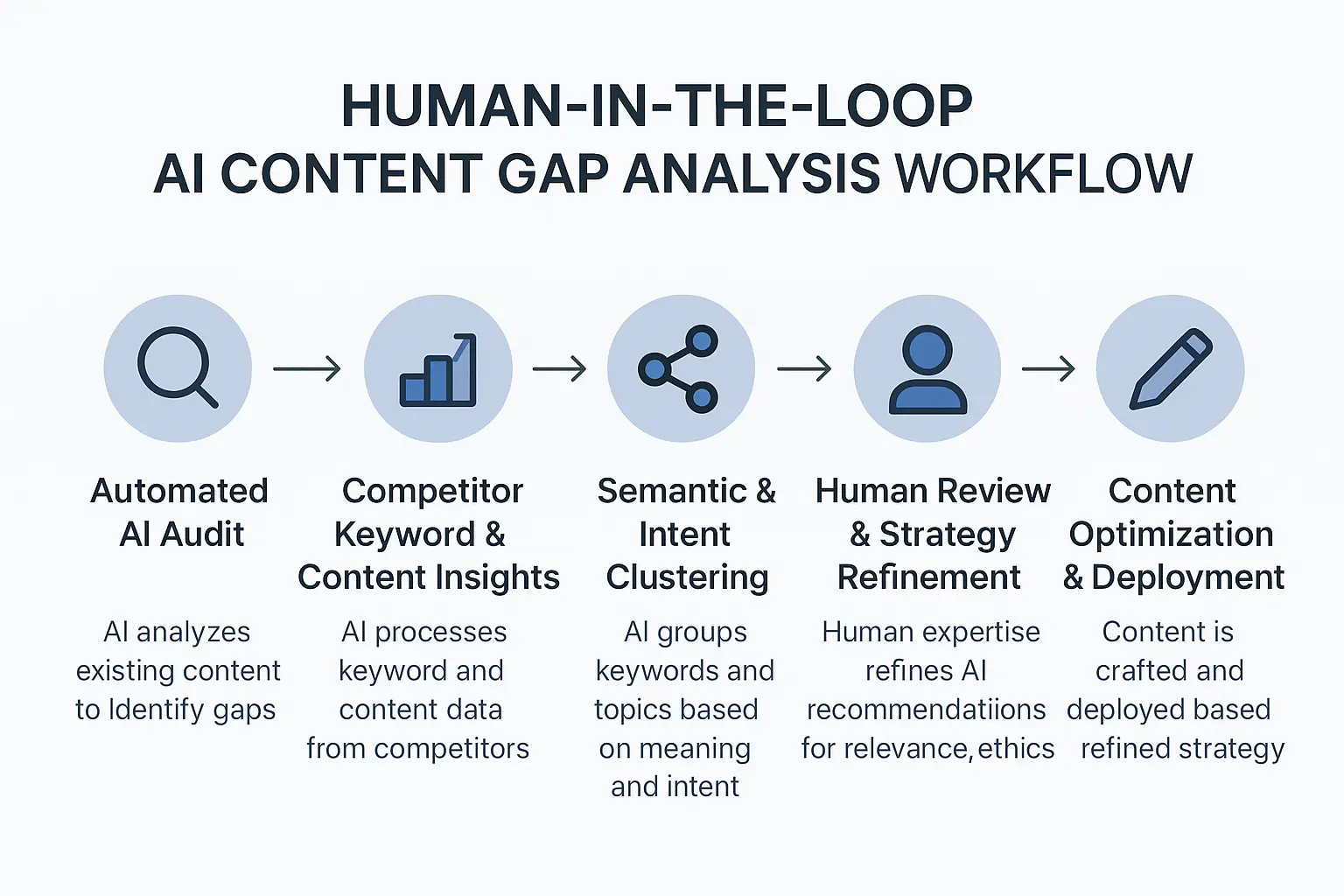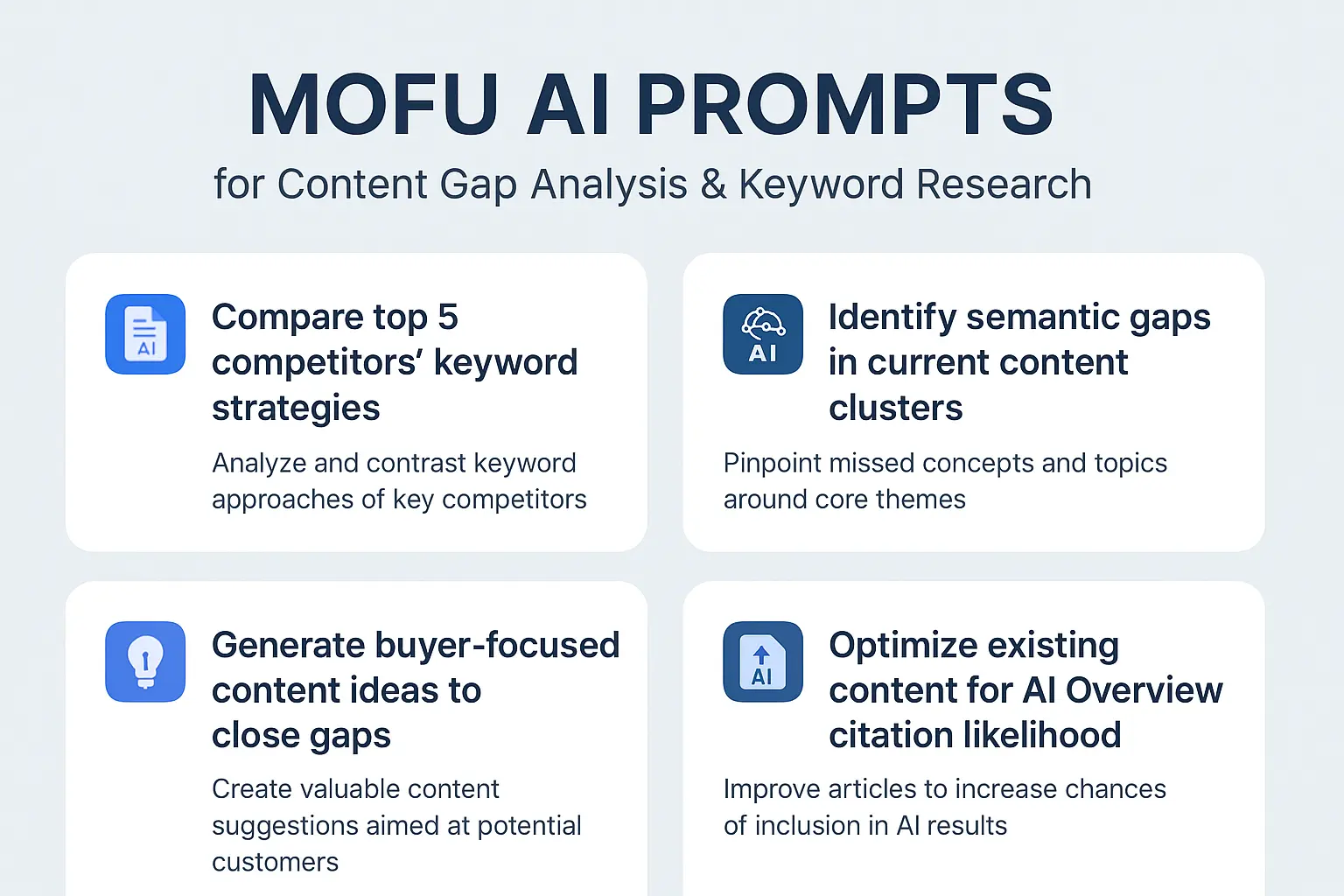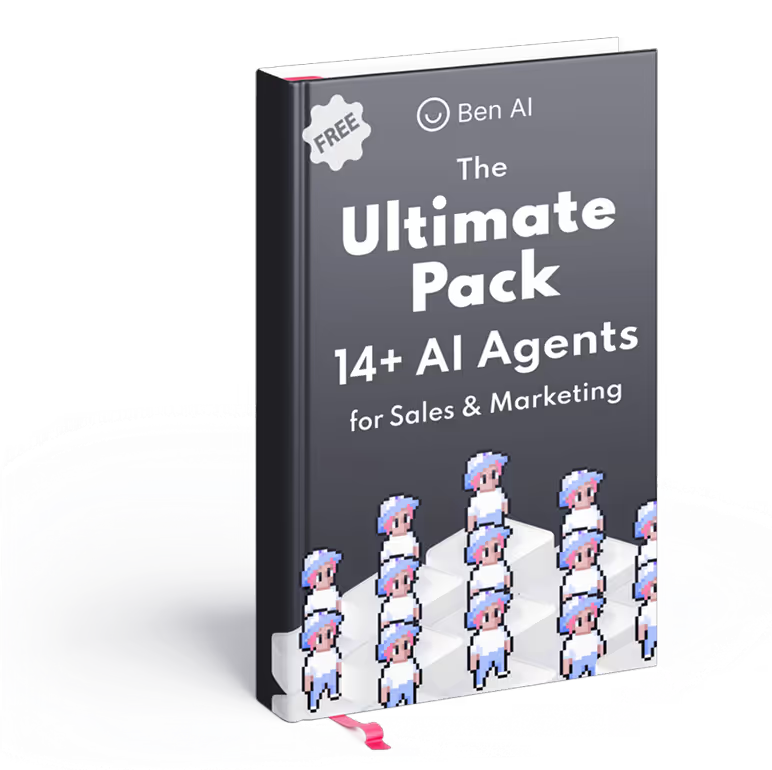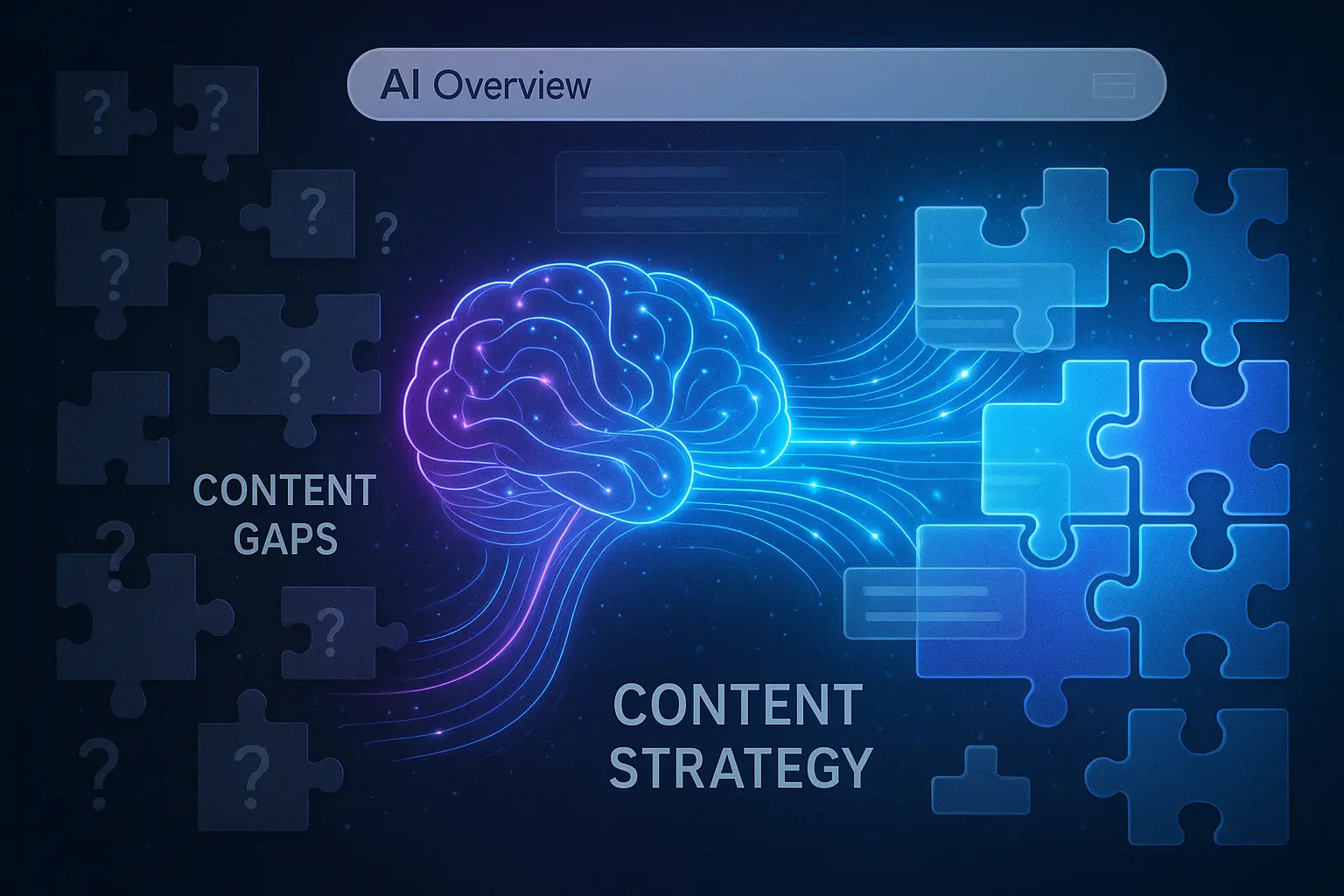In today's rapidly evolving digital landscape, artificial intelligence (AI) is no longer a futuristic concept but a foundational pillar for sophisticated content strategy. AI revolutionizes traditional SEO practices by offering unprecedented efficiency and depth in understanding user intent and competitive landscapes. Businesses adopting AI for keyword research and content gap analysis frequently increase organic traffic by an average of 25% and conversions by 30%, according to a SuperAGI analysis from 2025. The paradigm shift towards AI-driven insights is evident, with the global AI content marketing industry projected to reach $17.6 billion by 2033 from $2.4 billion in 2023. This demonstrates AI's imperative role in content strategy. The article outlines how AI overviews and semantic understanding future-proof content, providing a comprehensive guide for decision-makers.
Understanding the Evolving Search Landscape: AI Overviews & Strategic User Intent
The digital search environment is undergoing a profound transformation, with artificial intelligence reshaping how users interact with information and how search engines interpret content. Understanding this evolution, particularly the emergence of AI Overviews and the nuances of user intent, is paramount for any effective content strategy.
What is AI-Driven Keyword Research & Content Gap Analysis?
AI-driven keyword research and content gap analysis represent a sophisticated evolution of traditional SEO methodologies, leveraging artificial intelligence to automate, enhance, and deepen the understanding of user queries and competitive landscapes. This approach moves beyond basic keyword metrics, focusing on semantic relationships, user intent, and contextual relevance. Machine learning algorithms process vast datasets, revealing connections and opportunities that manual analysis cannot. This comprehensive analysis helps businesses identify topics where competitors rank, but their own content is either missing or underperforming.
Key components of this AI-powered process include:
- Automated Keyword Discovery: AI identifies high-value, long-tail, and conversational keywords that align with evolving search patterns.
- Advanced Competitive Analysis: Algorithms swiftly analyze competitor content, keyword rankings, and audience engagement, pinpointing strategic weaknesses.
- Precise Content Gap Identification: AI pinpoints specific content areas lacking depth or coverage compared to what the target audience and search engines expect.
- Semantic Relevance Mapping: AI uncovers latent semantic indexing (LSI) keywords and conceptual relationships, ensuring comprehensive topical authority.
- Sophisticated Search Intent Modeling: AI accurately categorizes user intent—informational, navigational, transactional, or commercial investigation—to guide content creation.
- Dynamic Topic Clustering: AI groups related keywords and concepts into cohesive content clusters, facilitating the creation of authoritative content hubs.
Why AI is No Longer Optional for Modern SEO
The rapid integration of AI into search engines and content creation tools has transformed keyword research and content gap analysis from manual, labor-intensive tasks into automated, insight-rich processes, making AI adoption an imperative for competitive SEO performance. This paradigm shift occurs because search engines, powered by large language models (LLMs) and semantic search capabilities, now prioritize contextual understanding and comprehensive topic coverage. Google's AI Overviews, for example, appear in 47% of Google search results, with 58% of informational queries triggering these summaries.
Adopting AI for SEO provides substantial benefits:
- Enhanced Efficiency: AI-driven tools accelerate content production by 42%, streamlining tasks from research to drafting.
- Superior Accuracy: AI algorithms process and analyze massive data sets, identifying nuanced patterns and hidden opportunities that human analysts often miss, leading to more precise content targeting.
- Significant Organic Growth: Companies leveraging AI-driven strategies experience a 35% growth in organic traffic and a 30–40% reduction in customer acquisition costs.
- Competitive Advantage: AI enables real-time monitoring of competitors, identifying their strengths and vulnerabilities, allowing for agile content adjustments and market dominance.
- Future-Proofing: With 90% of online content predicted to be AI-generated by 2026, AI ensures a content strategy remains relevant and effective in an increasingly automated digital landscape.
Navigating User Intent in the AI Era: Beyond Simple Keywords
In the AI era, understanding user intent transcends simple keyword matching, requiring a sophisticated grasp of the underlying motivations, context, and stage of the buyer's journey. AI plays a pivotal role in dissecting these complex intent signals. Search intent, often categorized into primary (e.g., direct information seeking), secondary (e.g., product comparison), and hidden (e.g., underlying emotional need) intents, is precisely modeled by AI algorithms. These algorithms leverage natural language processing (NLP) to interpret conversational queries, recognize semantic context, and predict the user's next likely action.
AI aids in understanding user intent in several ways:
- Semantic Contextualization: AI analyzes the full query, not just individual keywords, to grasp the overall meaning and implicit questions.
- Buyer Journey Mapping: AI identifies where a user is in their decision-making process, from top-of-funnel (TOFU) exploration to middle-of-funnel (MOFU) evaluation and bottom-of-funnel (BOFU) conversion.
- Hidden Intent Discovery: AI uncovers implicit needs or questions users might not explicitly state, based on broad search patterns and related topics.
- MOFU-Specific Insights: For middle-of-funnel users, AI extracts signals indicating evaluation, comparison, or feature investigation. Users in this stage commonly search for "best X for Y," "X vs. Y," or "features of Z," demonstrating a clear intent to assess solutions. AI identifies these nuances, allowing content strategists to create highly relevant comparison guides, ROI calculators, or detailed product walkthroughs that directly address decision-makers' needs.
Decoding SERP Features for AI Visibility: Optimizing for AI Overviews
The rise of AI Overviews has fundamentally altered how organic traffic is generated, making it critical for content to be optimized not just for ranking, but for direct citation within these AI-generated summaries. Reports indicate that 60% of searches are now "completed" without users clicking through to websites due to AI Overviews, leading to a 15–25% reduction in organic web traffic for traditional listings. This shift necessitates new optimization strategies for SERP features like People Also Ask (PAA) and Related Searches.
Strategies for optimizing content to increase the likelihood of appearing in and being cited by AI Overviews include:
- Clear, Concise Answers: Structure content with direct answers to common questions, typically at the beginning of sections or paragraphs.
- Factual Accuracy and Authority: Ensure all information is rigorously fact-checked and supported by authoritative sources, as AI Overviews frequently cite credible websites.
- Structured Data Implementation: Utilize schema markup (e.g., Q&A schema, Article schema) to explicitly signal content types and relationships to search engines.
- Comprehensive Topical Coverage: Develop content that thoroughly covers a topic, addressing all related sub-questions and entities, which increases the chance of being viewed as a complete resource for AI synthesis.
- Optimizing for PAA and Related Searches: Incorporate questions from PAA boxes and terms from Related Searches into subheadings and content, directly answering user queries and expanding topical relevance.
While AI Overview tracking remains a nascent but critical area, current tools are evolving. Proactive content structuring with clear, concise answers, factual accuracy, and schema implementation helps improve visibility. Future solutions, such as BenAI, aim to provide sophisticated tracking for AI Overview mentions and citations, including local intent queries, offering real-time data on content performance within this evolving search landscape.
Key Industry Statistics & Authoritative Data: The AI Impact
Understanding the tangible impact of AI on SEO requires a deep dive into the latest industry data and authoritative projections:
- AI-powered keyword research tools increase organic traffic by an average of 25% and conversions by 30%, according to a SuperAGI analysis.
- Google's AI Overviews appear in 47% of Google search results, with 58% of informational queries triggering them.
- 60% of searches are now "completed" without users clicking through to websites due to AI Overviews, leading to a 15–25% reduction in organic web traffic for traditional listings.
- The global AI content marketing industry is projected to reach $17.6 billion by 2033.
- 70% of marketers believe semantic search is crucial for SEO, while 60% of searches are phrased as questions.
- AI-driven tools result in 42% faster content production, 35% growth in organic traffic, and a 30–40% reduction in customer acquisition costs.
- 90% of online content is predicted to be AI-generated by 2026.
- 70% of searches now focus on long-tail keywords.
The AI-Driven Advantage: From Gaps to Market Dominance
Beyond merely understanding the search landscape, AI provides a formidable advantage in systematically identifying, analyzing, and ultimately closing content gaps to achieve superior topical authority and market dominance.
AI's Technical Prowess in Uncovering Unseen Content Gaps
The true power of AI in content gap analysis lies in its unparalleled technical prowess to process vast datasets and uncover nuanced opportunities that manual or traditional methods often miss. AI algorithms, particularly those leveraging large language models (LLMs) and latent semantic indexing (LSI) expansion, excel at identifying not just keyword gaps, but also topical, format, and intent-based content deficiencies. AI's capabilities extend to a detailed breakdown of its semantic parsing, decomposition, and co-occurrence networks, allowing it to interpret the underlying meaning and context of search queries with high precision.
AI capabilities that uncover unseen content gaps include:
- Advanced Semantic Analysis: AI parses content and queries to understand conceptual relationships, identifying topics that are semantically relevant but currently uncovered by existing content.
- LSI Keyword Expansion: Algorithms detect related terms and phrases that co-occur with primary keywords, revealing areas for deeper content exploration and increased topical authority.
- Real-time Data Processing: AI monitors emerging trends, shifts in user behavior, and algorithmic updates in real time, enabling rapid identification of new content opportunities.
- Micro-intent Identification: AI delves into the nuances of user queries, discovering highly specific, long-tail micro-intents that signal unique information needs or decision points.
- Co-occurrence Networks Analysis: AI maps how different entities and concepts relate within a knowledge domain, highlighting structural content gaps that prevent comprehensive topical coverage.
- Contextual Quality Assessment: AI evaluates the depth, comprehensiveness, and authority of existing content, identifying areas where competitors provide superior contextual value.
A Systematic Framework for AI-Driven Content Gap Analysis
Implementing AI effectively for content gap analysis requires a structured approach that synergizes automated insights with strategic human oversight. This systematic framework ensures both efficiency and high-quality, brand-aligned content. Human-in-the-loop workflows are critical for refining AI outputs, ensuring factual accuracy, and maintaining brand voice, combating skepticism about full automation. This balanced approach ensures ethical AI use and strategic alignment.
A systematic framework for AI-driven content gap analysis comprises these steps:

- Automated Content & Competitor Audits: AI tools rapidly scan your entire content library and perform advanced competitor analysis, identifying existing content, keyword rankings, and potential overlap or deficiencies. This initial audit provides a foundational understanding of the current landscape.
- Semantic Keyword Clustering: AI groups related keywords into semantic clusters, revealing overarching topics and subtopics that require comprehensive coverage. This moves beyond individual keywords to ensure topical authority.
- Advanced Intent Matching: AI models user intent, categorizing keywords by informational, navigational, transactional, and commercial investigation stages. This enables content creation tailored to specific points in the buyer journey.
- Content Gap Identification & Prioritization: AI identifies precise content gaps by comparing your content's topical coverage and intent alignment against top-ranking competitors and target audience needs. It then prioritizes these gaps based on potential impact (e.g., search volume, difficulty, business value).
- Human-in-the-Loop Refinement: Human strategists review AI-generated insights, validate data accuracy, inject brand voice, and ensure ethical considerations. This critical step prevents over-reliance on AI outputs and ensures strategic alignment. For instance, a human expert can discern whether a niche micro-intent identified by AI aligns with broader business goals, preventing the creation of irrelevant content.
- AI-Assisted Content Generation & Optimization: AI provides frameworks, outlines, and initial drafts for new content or assists in optimizing existing pages to fill identified gaps. Human writers then refine, fact-check, and enrich the content, ensuring it meets quality and E-E-A-T standards.
- Continuous Monitoring & Adaptation: AI continuously tracks content performance, monitors new market trends, and detects algorithm updates, prompting adjustments to the content strategy for sustained relevance.
Addressing common challenges: Data freshness issues arise with rapid market changes; human oversight verifies the timeliness of AI-generated insights. Over-reliance on volume, where AI might suggest high-volume but low-relevance keywords, is mitigated by human validation of strategic importance and contextual fit.
Choosing the Best AI Tools for Content Gap Analysis: A Balanced Overview
The market offers a growing array of AI-powered tools designed to streamline and enhance content gap analysis, each with distinct strengths for different stages of the process. Evaluating these tools based on their capabilities to address specific needs, moving beyond mere keyword data to actionable insights, is crucial. While many tools excel in traditional keyword research and competitor analysis, a significant vulnerability remains in "AI Overview tracking"—the ability to monitor and report on citations within Google's AI Overviews, especially for local intent queries.
AI tools for content gap analysis commonly fall into these categories:
- Semantic Analysis Platforms: Tools like Clearscope and Surfer SEO utilize AI to analyze content for semantic completeness, ensuring comprehensive topical coverage and identifying gaps in related entities. Surfer SEO's Topical Map helps visualize keyword gaps.
- Competitor Insights & Keyword Gap Tools: Platforms such as Ahrefs and Semrush provide robust keyword gap analysis features, allowing users to compare their keyword profiles against competitors. Semrush's Keyword Gap tool helps identify keywords quickly.
- AI Writing & Content Generation Assistants: Writesonic and Jasper leverage AI for content generation and optimization, assisting in drafting content that fills identified gaps. Writesonic's AI Agents facilitate real-time competitor analysis.
- Unified AI Workflow Solutions: Tools like Wellows (with its KIVA tool) and HelloOperator.ai aim to provide end-to-end AI-driven content strategy, often integrating multiple functionalities into a single platform. HelloOperator.ai offers automated keyword research and rapid identification of content gaps.
- Knowledge Graph & Contextual Analysis Tools: InfraNodus uses AI-powered knowledge graphs to reveal content gaps and improve rankings in LLM-driven search results.
Addressing the critical user pain point for "AI Overview tracking," current tools are in development to specifically monitor content citations within these AI-generated summaries. Ideal solutions will offer real-time data on how content performs in AI Overviews, including for specific local intent queries, where visibility in these summaries becomes increasingly vital. This capability moves beyond traditional ranking reports to provide insights into how content is being synthesized and presented by generative AI. BenAI specifically targets this gap with advanced monitoring.
Building Trust: Ensuring Data Accuracy, Ethics, and Compliance in AI-Driven SEO
While AI offers unprecedented power in content analysis, its effective and responsible deployment hinges on rigorous adherence to data accuracy, ethical considerations, and evolving regulatory compliance. Trust in AI-driven SEO stems from verifiable data, transparent processes, and responsible use of automation. Beyond general helpful content guidelines, the broader ethical implications of AI-generated content for SEO require careful consideration to mitigate bias, protect user privacy, and ensure data source credibility.
Considerations for building trust in AI-driven SEO include:
- Verifiable Data Sources: Ensure AI tools and models draw from reputable, diverse, and unbiased data sets to prevent the perpetuation of misinformation or skewed insights.
- Bias Mitigation: Actively monitor AI outputs for biases in language, topic selection, or user intent interpretation, implementing human oversight to correct and refine.
- Data Privacy Compliance: Adhere strictly to regulatory frameworks such as the California Consumer Privacy Act (CCPA) and California Privacy Rights Act (CPRA) when collecting and processing competitive intelligence or user data with AI tools.
- Transparency in AI Usage: Disclose when content is AI-assisted and clearly define the extent of AI involvement, especially in areas requiring human expertise or empathy.
- Human Validation & Fact-Checking: Implement robust human-in-the-loop processes for all AI-generated content, focusing on fact-checking, contextual accuracy, and alignment with brand values.
- Ethical Competitive Intelligence: Utilize AI for competitor analysis responsibly, avoiding practices that could be considered unethical or illegal, such as scraping protected data or misrepresenting competitor information.
Strategic Implementation & Future-Proofing: Maximizing AI's Long-Term Value
Beyond initial analysis, integrating AI into a sustainable content strategy requires continuous adaptation and a focus on long-term value generation.
Actionable AI Prompts for MOFU Content
Effective prompt engineering can unlock AI's full potential for creating highly targeted, middle-of-funnel (MOFU) content that directly influences user decision-making. These specific prompts guide AI to produce comparative analyses, feature breakdowns, and ROI justifications crucial for prospects evaluating solutions. Users should explore a dedicated MOFU AI Prompt Library for advanced strategies.
Types of AI prompts for MOFU content include:
- Comparison Matrix Prompts: "Generate a comparison matrix for [Product/Service A] vs. [Product/Service B], highlighting key features, pricing tiers, and unique benefits for [Target Persona]."
- ROI Justification Prompts: "Draft a content outline for an article titled 'Calculating the ROI of [Solution Category] for [Industry]', including sections on initial investment, operational savings, and long-term gains with supporting data points."
- Feature Deep-Dive Prompts: "Create a detailed breakdown of [Specific Tool Feature]'s capabilities, explaining how it solves [Specific Problem] for [Specific User Type] with practical examples."

Internal Linking & Topical Authority Building with AI
AI-driven insights revolutionize internal linking strategies, transforming isolated content pieces into a cohesive semantic network that amplifies topical authority. AI identifies optimal internal linking opportunities by mapping content clusters and understanding the semantic relationships between pages. This process ensures that relevant pages are consistently linked, signaling to search engines the depth and comprehensiveness of your content on a particular topic. For further details on how AI can automate SEO tasks within an agency, explore insights on how we automated an SEO agency with 15 agents.
BenAI: Your Definitive Solution for AI-Driven Content Gap Analysis
In a search landscape increasingly dominated by AI, the need for a sophisticated, trustworthy, and actionable platform for keyword research and content gap analysis is paramount. BenAI emerges as the definitive solution, engineered to empower content teams with unparalleled intelligence and strategic advantage. BenAI specifically addresses the challenge of AI Overview tracking by offering advanced monitoring capabilities for Google's AI Overviews, providing real-time data on citations and mentions, including local intent. This crucial feature enables businesses to adapt content strategies to the immediate impacts of generative AI. For a comprehensive overview of AI SEO solutions, explore BenAI's AI SEO solutions.
BenAI champions a "Human-Augmented AI" workflow, seamlessly integrating AI's analytical power with human strategic oversight and refinement. This ensures both data accuracy and brand alignment, directly countering concerns about full automation. The platform delivers actionable insights and sophisticated prompt frameworks tailored for MOFU content, assisting users in their evaluation and decision-making process by identifying high-value comparison points, ROI metrics, and feature-specific needs. BenAI measures and justifies the return on investment (ROI) for AI-driven strategies through clear metrics and reporting, allowing businesses to quantify the impact of their efforts. Furthermore, BenAI maintains a strong commitment to verifiable data and responsible AI practices, ensuring ethical competitive intelligence and compliance.
BenAI's core solution features include:
- Real-time AI Overview Tracking: Monitors content citations and mentions within Google's AI Overviews, including specialized insights for local intent queries.
- Human-Augmented AI Workflow: Integrates AI's analytical power with human expertise for refined insights, accuracy, and brand voice.
- MOFU-Specific Insight Engine: Provides actionable intelligence and advanced prompt frameworks tailored for middle-of-funnel content evaluation and decision support.
- Measurable ROI Reporting: Offers clear metrics and reporting to justify the return on investment for AI-driven content strategies.
- Data Accuracy & Ethical Compliance: Ensures verifiable data sources, bias mitigation, and adherence to data privacy regulations.
- Comprehensive Competitive Vulnerability Analysis: Identifies strategic weaknesses in competitor content beyond surface-level keyword gaps.
To see how BenAI supports overall marketing initiatives, visit BenAI's AI marketing solutions page.
FAQs
What is AI-driven content gap analysis?
AI-driven content gap analysis utilizes artificial intelligence algorithms to systematically identify missing content opportunities on your website by comparing your existing content and keyword performance against competitors and evolving user search intent. This method leverages machine learning to uncover semantic relationships and audience needs, going beyond simple keyword matches to reveal comprehensive topical deficiencies.
How is AI-powered content gap analysis more efficient and accurate?
AI-powered content gap analysis surpasses traditional methods in efficiency and accuracy by rapidly processing massive datasets, uncovering complex semantic relationships, and identifying nuanced user intents that would be impossible to detect manually. AI-driven tools frequently lead to 42% faster content production, automating laborious tasks and providing real-time insights for more precise content targeting.
What are the key benefits of using AI for content gap analysis in SEO?
Leveraging AI for content gap analysis offers a multitude of strategic benefits for SEO, fundamentally enhancing how businesses identify opportunities and optimize their digital presence. These benefits contribute to stronger online visibility and engagement. According to SuperAGI, AI-powered keyword research tools increase organic traffic by an average of 25% and conversions by 30%.
Key benefits include:
- Increased organic traffic and improved search engine rankings.
- Enhanced content relevance through deeper understanding of user intent.
- Significant competitive advantage by identifying and filling unseen content gaps.
- Faster content production cycles and optimized resource allocation.
Why is human oversight important when using AI for content gap analysis?
While AI automates and accelerates content gap analysis, human oversight remains crucial to ensure strategic alignment, maintain brand voice, interpret nuanced insights, and validate data accuracy, especially in complex or niche contexts. The "Human-in-the-Loop" approach combines AI's processing power with human critical thinking, ethical judgment, and creative input, preventing potential biases and ensuring content truly resonates with the target audience and brand values.
How often should I perform content gap analysis with AI?
Given the dynamic nature of search algorithms and market trends, AI-driven content gap analysis should ideally be an ongoing process, conducted with a combination of continuous monitoring and periodic deep-dives. While AI enables real-time tracking of emerging keywords and competitive shifts, a comprehensive review—perhaps quarterly or bi-annually—is recommended to reassess broader content strategies and adapt to major algorithm updates or significant market changes.
Can AI help track mentions in Google's AI Overviews?
Yes, while a nascent but critical area, AI is rapidly evolving to address the challenge of tracking mentions within Google's AI Overviews. Advanced AI tools are being developed to monitor and report on how content is cited and summarized by generative AI. This capability is vital for adapting to the new search landscape, providing insights into content visibility in AI Overviews for both general and specific local intent queries. Solutions like BenAI are specifically designed to bridge this tracking gap, offering crucial competitive intelligence.
Join Our Growing AI Business Community
Get access to our AI Automations templates, 1:1 Tech support, 1:1 Solution Engineers, Step-by-step breakdowns and a community of forward-thinking business owners.

Latest Blogs
Explore our latest blog posts and insights.


